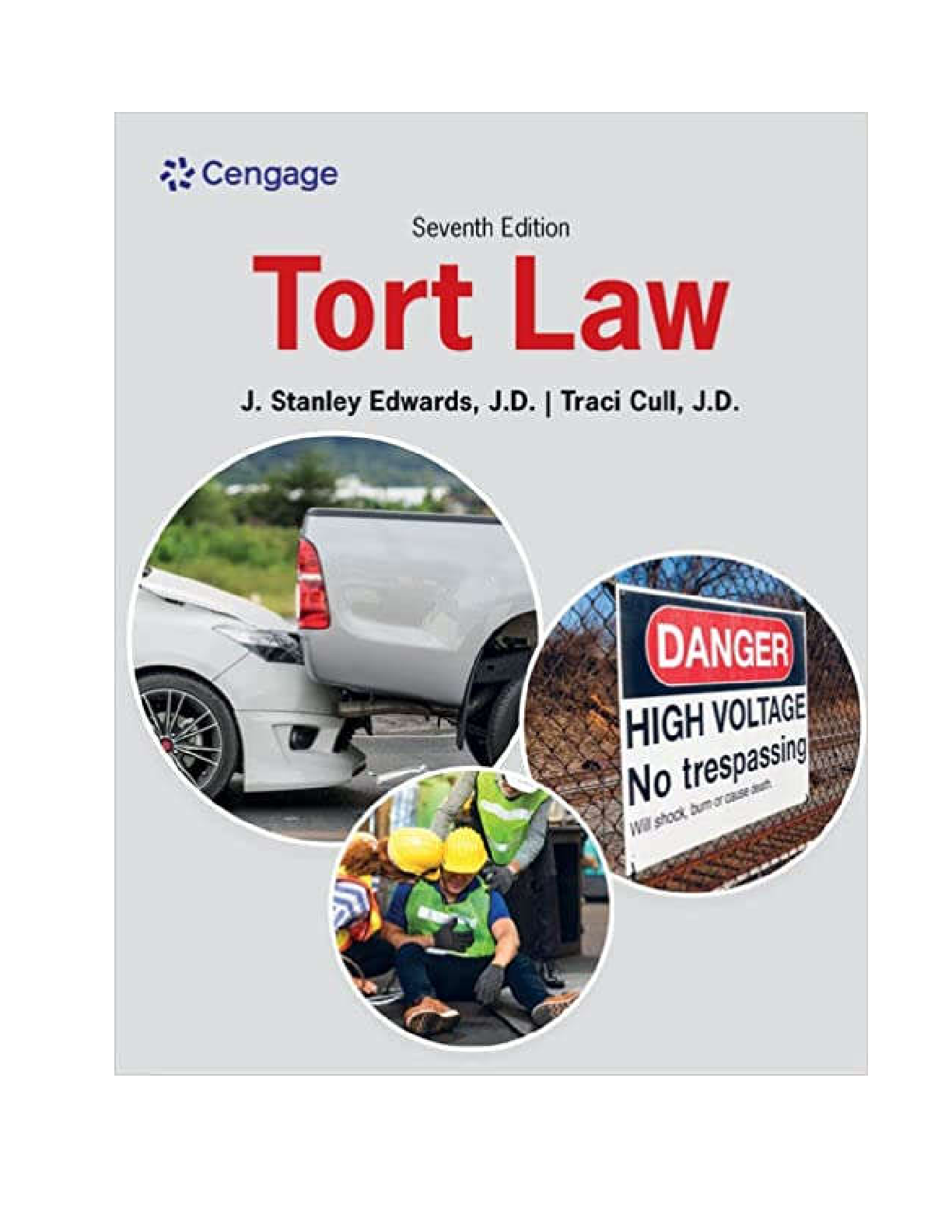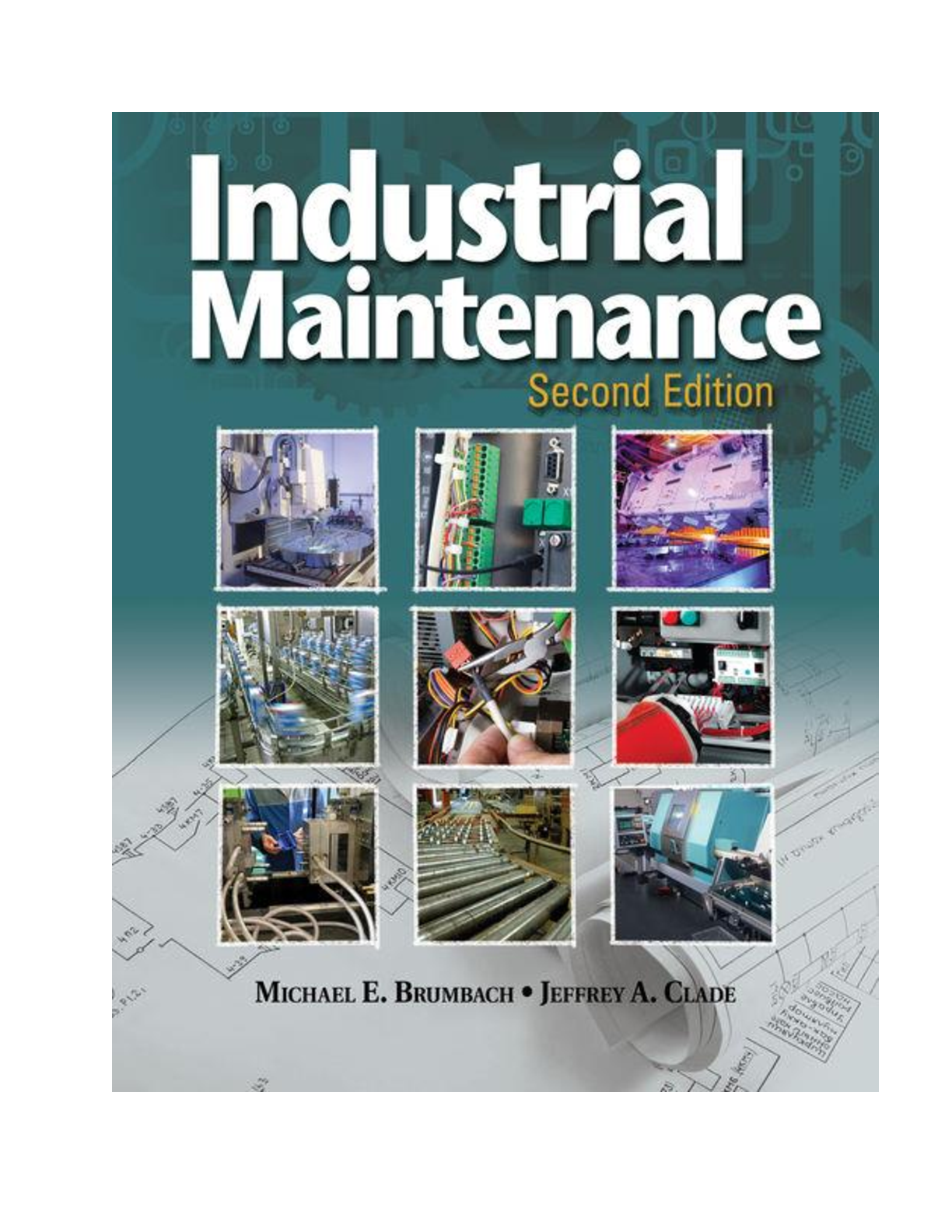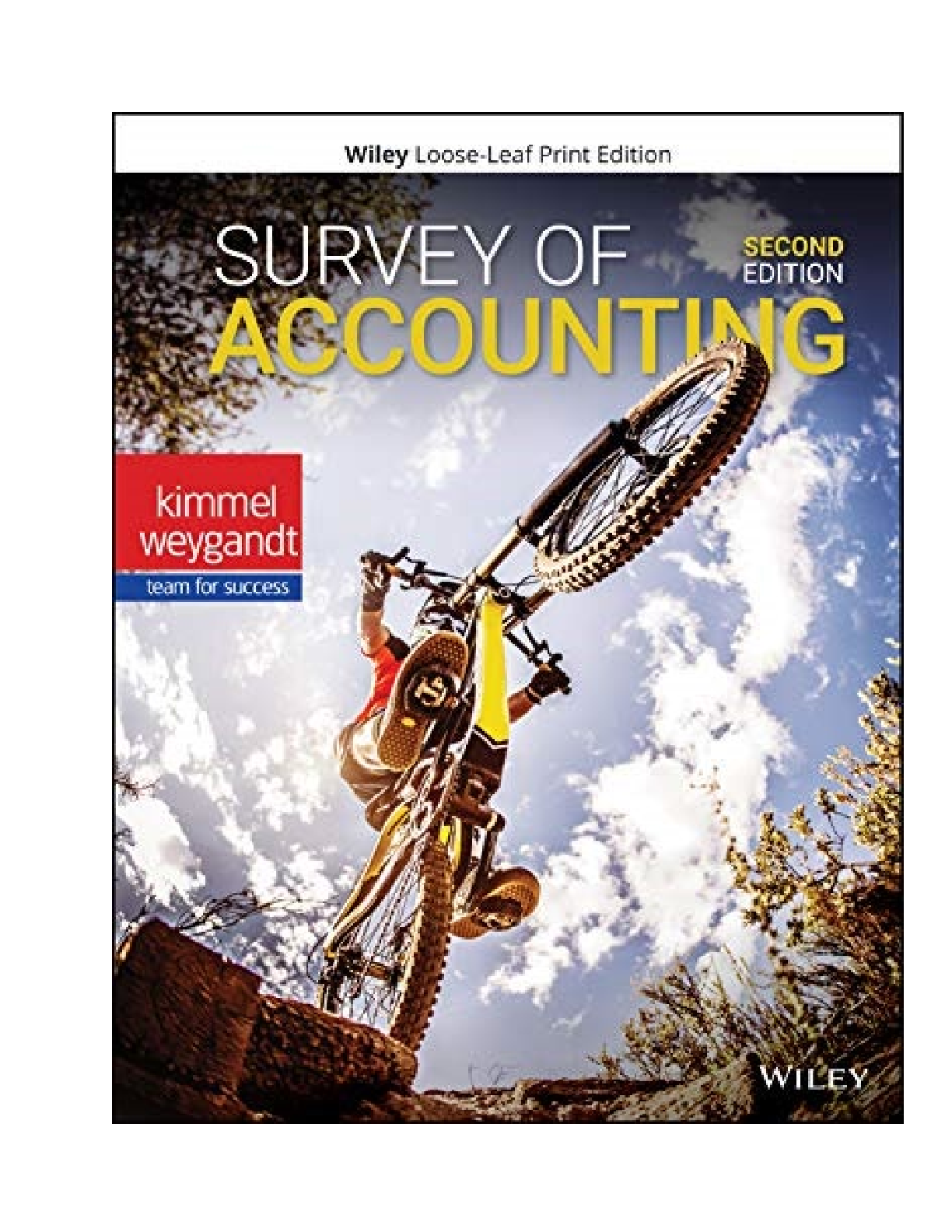Information Technology > eBook-PDF > [eBook] [PDF] for Big Java Late Objects, 2nd Edition By Cay S. Horstmann (All)
[eBook] [PDF] for Big Java Late Objects, 2nd Edition By Cay S. Horstmann
Document Content and Description Below
Title Page Getting the Most from Your eText Tips for Using the Interactive Exercises New to this Edition A Tour of the Book Walkthrough of the Learning Aids Acknowledgments Quick Reference 1. ... Introduction 1.1 Computer Programs Self Check 1.2 The Anatomy of a Computer Self Check Computing & Society 1.1 Computers Are Everywhere 1.3 The Java Programming Language Self Check 1.4 Becoming Familiar with Your Programming Environment Self Check Programming Tip 1.1 Backup Copies Video Example 1.1 Compiling and Running a Program 1.5 Analyzing Your First Program Syntax 1.1 Java Program Self Check Common Error 1.1 Omitting Semicolons 1.6 Errors Self Check Common Error 1.2 Misspelling Words 1.7 Problem Solving: Algorithm Design 1.7.1 The Algorithm Concept 1.7.2 An Algorithm for Solving an Investment Problem 1.7.3 Pseudocode 1.7.4 From Algorithms to Programs Self Check How To 1.1 Describing an Algorithm with Pseudocode Worked Example 1.1 Writing an Algorithm for Tiling a Floor Video Example 1.2 Dividing Household Expenses Chapter Summary Interactive Review and Practice Practice 1.1 Chapter Review End-of-Chapter Exercises Review Exercises Practice Exercises Programming Projects 2. Fundamental Data Types 2.1 Variables 2.1.1 Variable Declarations Syntax 2.1 Variable Declaration Self Check 2.1.2 Number Types Self Check 2.1.3 Variable Names Self Check 2.1.4 The Assignment Statement Syntax 2.2 Assignment Self Check 2.1.5 Constants Syntax 2.3 Constant Declaration Self Check 2.1.6 Comments Self Check Common Error 2.1 Using Undeclared or Uninitialized Variables Programming Tip 2.1 Choose Descriptive Variable Names Common Error 2.2 Overflow Common Error 2.3 Roundoff Errors Programming Tip 2.2 Do Not Use Magic Numbers Special Topic 2.1 Numeric Types in Java Special Topic 2.2 Big Numbers 2.2 Arithmetic 2.2.1 Arithmetic Operators Self Check 2.2.2 Increment and Decrement Self Check 2.2.3 Integer Division and Remainder Self Check 2.2.4 Powers and Roots Self Check 2.2.5 Converting Floating-Point Numbers to Integers Syntax 2.4 Cast Self Check Common Error 2.4 Unintended Integer Division Common Error 2.5 Unbalanced Parentheses Programming Tip 2.3 Spaces in Expressions Java 8 Note 2.1 Avoiding Negative Remainders Special Topic 2.3 Combining Assignment and Arithmetic Video Example 2.1 Using Integer Division Computing & Society 2.1 The Pentium Floating-Point Bug 2.3 Input and Output 2.3.1 Reading Input Syntax 2.5 Input Statement Self Check 2.3.2 Formatted Output Self Check Programming Tip 2.4 Use the API Documentation How To 2.1 Carrying out Computations Worked Example 2.1 Computing the Cost of Stamps 2.4 Problem Solving: First Do It By Hand Self Check Worked Example 2.2 Computing Travel Time 2.5 Strings 2.5.1 The String Type 2.5.2 Concatenation Self Check 2.5.3 String Input Self Check 2.5.4 Escape Sequences 2.5.5 Strings and Characters Self Check 2.5.6 Substrings Self Check Special Topic 2.4 Instance Methods and Static Methods Special Topic 2.5 Using Dialog Boxes for Input and Output Video Example 2.2 Computing Distances on Earth Computing & Society 2.2 International Alphabets and Unicode Chapter Summary Interactive Review and Practice Practice 2.1: Variables Practice 2.2: Arithmetic Practice 2.3: Strings Practice 2.4: First Do It By Hand Practice 2.5: Challenging Programming Problems Chapter Review End-of-Chapter Exercises Review Exercises Practice Exercises Programming Projects 3. Decisions 3.1 The if Statement Syntax 3.1 if Statement Self Check Programming Tip 3.1 Brace Layout Programming Tip 3.2 Always Use Braces Common Error 3.1 A Semicolon After the if Condition Programming Tip 3.3 Tabs Special Topic 3.1 The Conditional Operator Programming Tip 3.4 Avoid Duplication in Branches 3.2 Comparing Numbers and Strings Syntax 3.2 Comparisons Self Check Common Error 3.2 Exact Comparison of Floating-Point Numbers Common Error 3.3 Using == to Compare Strings Special Topic 3.2 Lexicographic Ordering of Strings How To 3.1 Implementing an if Statement Worked Example 3.1 Extracting the Middle Computing & Society 3.1 The Denver Luggage Handling System 3.3 Multiple Alternatives Self Check Special Topic 3.3 The switch Statement 3.4 Nested Branches Self Check Programming Tip 3.5 Hand-Tracing Common Error 3.4 The Dangling else Problem Special Topic 3.4 Enumeration Types Video Example 3.1 Computing the Plural of an English Word 3.5 Problem Solving: Flowcharts Self Check 3.6 Problem Solving: Test Cases Self Check Programming Tip 3.6 Make a Schedule and Make Time for Unexpected Problems Special Topic 3.5 Logging 3.7 Boolean Variables and Operators Self Check Common Error 3.5 Combining Multiple Relational Operators Common Error 3.6 Confusing && and || Conditions Special Topic 3.6 Short-Circuit Evaluation of Boolean Operators Special Topic 3.7 De Morgan’s Law 3.8 Application: Input Validation Self Check Video Example 3.2 The Genetic Code Computing & Society 3.2 Artificial Intelligence Chapter Summary Interactive Review and Practice Practice 3.1: Simple Conditions Practice 3.2: Complex Conditions Practice 3.3: Points on a Line and in a Plane Chapter Review End-of-Chapter Exercises Review Exercises Practice Exercises Programming Projects 4. Loops 4.1 The while Loop Syntax 4.1 while Statement Self Check Common Error 4.1 Don’t Think “Are We There Yet?” Common Error 4.2 Infinite Loops Common Error 4.3 Off-by-One Errors Computing & Society 4.1 The First Bug 4.2 Problem Solving: Hand-Tracing Self Check 4.3 The for Loop Syntax 4.2 for Statement Self Check Programming Tip 4.1 Use for Loops for Their Intended Purpose Only Programming Tip 4.2 Choose Loop Bounds That Match Your Task Programming Tip 4.3 Count Iterations 4.4 The do Loop Self Check Programming Tip 4.4 Flowcharts for Loops 4.5 Application: Processing Sentinel Values Self Check Special Topic 4.1 The Loop-and-a-Half Problem and the break Statement Special Topic 4.2 Redirection of Input and Output Video Example 4.1 Evaluating a Cell Phone Plan 4.6 Problem Solving: Storyboards Self Check 4.7 Common Loop Algorithms 4.7.1 Sum and Average Value Self Check 4.7.2 Counting Matches Self Check 4.7.3 Finding the First Match Self Check 4.7.4 Prompting Until a Match is Found Self Check 4.7.5 Maximum and Minimum Self Check 4.7.6 Comparing Adjacent Values Self Check How To 4.1 Writing a Loop Worked Example 4.1 Credit Card Processing 4.8 Nested Loops Self Check Worked Example 4.2 Manipulating the Pixels in an Image 4.9 Problem Solving: Solve a Simpler Problem First Self Check 4.10 Application: Random Numbers and Simulations 4.10.1 Generating Random Numbers Self Check 4.10.2 Simulating Die Tosses Self Check 4.10.3 The Monte Carlo Method Self Check Special Topic 4.3 Drawing Graphical Shapes Video Example 4.2 Drawing a Spiral Computing & Society 4.2 Digital Piracy Chapter Summary Interactive Review and Practice Practice 4.1: Simple while Loops Practice 4.2: Loop Tracing Practice 4.3: for Loops Practice 4.4: do/while Loops Practice 4.5: More Complex Loops Practice 4.6: Algorithms Practice 4.7: Nested Loops Practice 4.8: Solve a Simpler Problem First Practice 4.9: Random Numbers Chapter Review End-of-Chapter Exercises Review Exercises Practice Exercises Programming Projects 5. Methods 5.1 Methods as Black Boxes Self Check 5.2 Implementing Methods Syntax 5.1 Static Method Declaration Self Check Programming Tip 5.1 Method Comments 5.3 Parameter Passing Self Check Programming Tip 5.2 Do Not Modify Parameter Variables Common Error 5.1 Trying to Modify Arguments 5.4 Return Values Self Check Common Error 5.2 Missing Return Value How To 5.1 Implementing a Method Worked Example 5.1 Generating Random Passwords 5.5 Methods Without Return Values Self Check 5.6 Problem Solving: Reusable Methods Self Check Computing & Society 5.1 Personal Computing 5.7 Problem Solving: Stepwise Refinement Self Check Programming Tip 5.3 Keep Methods Short Programming Tip 5.4 Tracing Methods Programming Tip 5.5 Stubs Worked Example 5.2 Calculating a Course Grade 5.8 Variable Scope Self Check Programming Tip 5.6 Using a Debugger Video Example 5.1 Debugging 5.9 Recursive Methods (Optional) Self Check How To 5.2 Thinking Recursively Video Example 5.2 Fully Justified Text Chapter Summary Interactive Review and Practice Practice 5.1: Simple Methods Practice 5.2: Reuse and Refinement Practice 5.3: Recursion Chapter Review End-of-Chapter Exercises Review Exercises Practice Exercises Programming Projects 6. Arrays and Array Lists 6.1 Arrays 6.1.1 Declaring and Using Arrays Syntax 6.1 Arrays Self Check 6.1.2 Array References Self Check 6.1.3 Partially Filled Arrays Self Check Common Error 6.1 Bounds Errors Common Error 6.2 Uninitialized Arrays Programming Tip 6.1 Use Arrays for Sequences of Related Items Computing & Society 6.1 Computer Viruses 6.2 The Enhanced for Loop Syntax 6.2 The Enhanced for Loop Self Check 6.3 Common Array Algorithms 6.3.1 Filling Self Check 6.3.2 Sum and Average Value Self Check 6.3.3 Maximum and Minimum Self Check 6.3.4 Element Separators 6.3.5 Linear Search Self Check 6.3.6 Removing an Element Self Check 6.3.7 Inserting an Element Self Check 6.3.8 Swapping Elements Self Check 6.3.9 Copying Arrays Self Check 6.3.10 Reading Input Common Error 6.3 Underestimating the Size of a Data Set Special Topic 6.1 Sorting with the Java Library Special Topic 6.2 Binary Search 6.4 Using Arrays with Methods Self Check Special Topic 6.3 Methods with a Variable Number of Parameters 6.5 Problem Solving: Adapting Algorithms Self Check Programming Tip 6.2 Reading Exception Reports How To 6.1 Working with Arrays Worked Example 6.1 Rolling the Dice 6.6 Problem Solving: Discovering Algorithms by Manipulating Physical Objects Self Check Video Example 6.1 Removing Duplicates from an Array 6.7 Two-Dimensional Arrays 6.7.1 Declaring Two-Dimensional Arrays Syntax 6.3 Two-Dimensional Array Declaration Self Check 6.7.2 Accessing Elements Self Check 6.7.3 Locating Neighboring Elements Self Check 6.7.4 Computing Row and Column Totals Self Check 6.7.5 Two-Dimensional Array Parameters Self Check Special Topic 6.4 Two-Dimensional Arrays with Variable Row Lengths Special Topic 6.5 Multidimensional Arrays Worked Example 6.2 A World Population Table 6.8 Array Lists Syntax 6.4 Array Lists 6.8.1 Declaring and Using Array Lists Self Check 6.8.2 Using the Enhanced for Loop with Array Lists Self Check 6.8.3 Copying Array Lists Self Check 6.8.4 Array Lists and Methods Self Check 6.8.5 Wrappers and Auto-boxing Self Check 6.8.6 Using Array Algorithms with Array Lists Self Check 6.8.7 Storing Input Values in an Array List Self Check 6.8.8 Removing Matches Self Check 6.8.9 Choosing Between Array Lists and Arrays Self Check Common Error 6.4 Length and Size Special Topic 6.6 The Diamond Syntax Video Example 6.2 Game of Life Chapter Summary Interactive Review and Practice Practice 6.1: Arrays Practice 6.2: Array Algorithms Practice 6.3: Adapting and Simulating Algorithms Practice 6.4: Two-Dimensional Arrays Practice 6.5: Array Lists Chapter Review End-of-Chapter Exercises Review Exercises Practice Exercises Programming Projects 7. Input/Output and Exception Handling 7.1 Reading and Writing Text Files Self Check Common Error 7.1 Backslashes in File Names Common Error 7.2 Constructing a Scanner with a String Special Topic 7.1 Reading Web Pages Special Topic 7.2 File Dialog Boxes Special Topic 7.3 Reading and Writing Binary Data 7.2 Text Input and Output 7.2.1 Reading Words Self Check 7.2.2 Reading Characters Self Check 7.2.3 Classifying Characters Self Check 7.2.4 Reading Lines Self Check 7.2.5 Scanning a String Self Check 7.2.6 Converting Strings to Numbers Self Check 7.2.7 Avoiding Errors When Reading Numbers Self Check 7.2.8 Mixing Number, Word, and Line Input Self Check 7.2.9 Formatting Output Self Check Special Topic 7.4 Regular Expressions Special Topic 7.5 Reading an Entire File Video Example 7.1 Computing a Document’s Readability 7.3 Command Line Arguments Self Check How To 7.1 Processing Text Files Worked Example 7.1 Analyzing Baby Names Computing & Society 7.1 Encryption Algorithms 7.4 Exception Handling 7.4.1 Throwing Exceptions Syntax 7.1 Throwing an Exception Self Check 7.4.2 Catching Exceptions Syntax 7.2 Catching Exceptions Self Check 7.4.3 Checked Exceptions Syntax 7.3 The throws Clause Self Check 7.4.4 Closing Resources Syntax 7.4 The try-with-resources Statement Self Check Programming Tip 7.1 Throw Early, Catch Late Programming Tip 7.2 Do Not Squelch Exceptions Programming Tip 7.3 Do Throw Specific Exceptions Special Topic 7.6 Assertions Special Topic 7.7 The try/finally Statement Computing & Society 7.2 The Ariane Rocket Incident 7.5 Application: Handling Input Errors Self Check Video Example 7.2 Detecting Accounting Fraud Chapter Summary Interactive Review and Practice Practice 7.1: Processing Text Files Practice 7.2: Complex Text Input and Output Practice 7.3: Exceptions Chapter Review End-of-Chapter Exercises Review Exercises Practice Exercises Programming Projects 8. Objects and Classes 8.1 Object-Oriented Programming Self Check 8.2 Implementing a Simple Class Syntax 8.1 Instance Variable Declaration Self Check 8.3 Specifying the Public Interface of a Class Self Check Special Topic 8.1 The javadoc Utility 8.4 Designing the Data Representation Self Check 8.5 Implementing Instance Methods Syntax 8.2 Instance Methods Self Check Programming Tip 8.1 All Instance Variables Should Be Private; Most Methods Should Be Public 8.6 Constructors Syntax 8.3 Constructors Self Check Common Error 8.1 Trying to Call a Constructor Common Error 8.2 Declaring a Constructor as void Special Topic 8.2 Overloading 8.7 Testing a Class Self Check How To 8.1 Implementing a Class Worked Example 8.1 Implementing a Menu Class Video Example 8.1 Paying Off a Loan 8.8 Problem Solving: Tracing Objects Self Check Computing & Society 8.1 Open Source and Free Software 8.9 Object References 8.9.1 Shared References Self Check 8.9.2 The null Reference Self Check 8.9.3 The this Reference Self Check Common Error 8.3 Forgetting to Initialize Object References in a Constructor Special Topic 8.3 Calling One Constructor from Another 8.10 Static Variables and Methods Self Check 8.11 Problem Solving: Patterns for Object Data 8.11.1 Keeping a Total Self Check 8.11.2 Counting Events Self Check 8.11.3 Collecting Values Self Check 8.11.4 Managing Properties of an Object Self Check 8.11.5 Modeling Objects with Distinct States Self Check 8.11.6 Describing the Position of an Object Self Check Computing & Society 8.2 Electronic Voting Machines Video Example 8.2 Modeling a Robot Escaping from a Maze 8.12 Packages 8.12.1 Organizing Related Classes into Packages 8.12.2 Importing Packages Syntax 8.4 Package Specification 8.12.3 Package Names 8.12.4 Packages and Source Files Self Check Common Error 8.4 Confusing Dots Special Topic 8.4 Package Access How To 8.2 Programming with Packages Chapter Summary Interactive Review and Practice Practice 8.1: Class Basics Practice 8.2: More About Classes Practice 8.3: Testing and Walkthroughs Practice 8.4: Patterns for Object Data Chapter Review End-of-Chapter Exercises Review Exercises Practice Exercises Programming Projects 9. Inheritance and Interfaces 9.1 Inheritance Hierarchies Self Check Programming Tip 9.1 Use a Single Class for Variation in Values, Inheritance for Variation in Behavior 9.2 Implementing Subclasses Syntax 9.1 Subclass Declaration Self Check Common Error 9.1 Replicating Instance Variables from the Superclass Common Error 9.2 Confusing Super- and Subclasses 9.3 Overriding Methods Self Check Common Error 9.3 Accidental Overloading Common Error 9.4 Forgetting to Use super When Invoking a Superclass Method Special Topic 9.1 Calling the Superclass Constructor Syntax 9.2 Constructor with Superclass Initializer 9.4 Polymorphism Self Check Special Topic 9.2 Dynamic Method Lookup and the Implicit Parameter Special Topic 9.3 Abstract Classes Special Topic 9.4 Final Methods and Classes Special Topic 9.5 Protected Access How To 9.1 Developing an Inheritance Hierarchy Worked Example 9.1 Implementing an Employee Hierarchy for Payroll Processing Video Example 9.1 Building a Discussion Board 9.5 Object: The Cosmic Superclass 9.5.1 Overriding the toString Method Self Check 9.5.2 The equals Method Self Check 9.5.3 The instanceof Operator Syntax 9.3 The instanceof Operator Self Check Common Error 9.5 Don’t Use Type Tests Special Topic 9.6 Inheritance and the toString Method Special Topic 9.7 Inheritance and the equals Method 9.6 Interface Types 9.6.1 Defining an Interface Syntax 9.4 Interface Types Self Check 9.6.2 Implementing an Interface Self Check 9.6.3 The Comparable Interface Self Check Common Error 9.6 Forgetting to Declare Implementing Methods as Public Programming Tip 9.2 Comparing Integers and Floating-Point Numbers Special Topic 9.8 Constants in Interfaces Special Topic 9.9 Generic Interface Types Java 8 Note 9.1 Static Methods in Interfaces Java 8 Note 9.2 Default Methods Special Topic 9.10 Function Objects Java 8 Note 9.3 Lambda Expressions Worked Example 9.2 Investigating Number Sequences Video Example 9.2 Drawing Geometric Shapes Computing & Society 9.1 Who Controls the Internet? Chapter Summary Interactive Review and Practice Practice 9.1: Inheritance and Polymorphism Practice 9.2: The Object Class Practice 9.3: Interfaces Chapter Review End-of-Chapter Exercises Review Exercises Practice Exercises Programming Projects 10. Graphical User Interfaces 10.1 Frame Windows 10.1.1 Displaying a Frame Self Check 10.1.2 Adding User-Interface Components to a Frame Self Check 10.1.3 Using Inheritance to Customize Frames Self Check Special Topic 10.1 Adding the main Method to the Frame Class 10.2 Events and Event Handling 10.2.1 Listening to Events Self Check 10.2.2 Using Inner Classes for Listeners Self Check 10.2.3 Application: Showing Growth of an Investment Self Check Common Error 10.1 Modifying Parameter Types in the Implementing Method Common Error 10.2 Forgetting to Attach a Listener Programming Tip 10.1 Don’t Use a Frame as a Listener Special Topic 10.2 Local Inner Classes Special Topic 10.3 Anonymous Inner Classes Java 8 Note 10.1 Lambda Expressions for Event Handling 10.3 Processing Text Input 10.3.1 Text Fields Self Check 10.3.2 Text Areas Self Check 10.4 Creating Drawings 10.4.1 Drawing on a Component Self Check 10.4.2 Ovals, Lines, Text, and Color Self Check 10.4.3 Application: Visualizing the Growth of an Investment Self Check Common Error 10.3 Forgetting to Repaint Common Error 10.4 By Default, Components Have Zero Width and Height How To 10.1 Drawing Graphical Shapes Worked Example 10.1 Coding a Bar Chart Creator Video Example 10.1 Solving Crossword Puzzles Chapter Summary End-of-Chapter Exercises Review Exercises Practice Exercises Programming Projects 11. Advanced User Interfaces 11.1 Layout Management Self Check 11.2 Choices 11.2.1 Radio Buttons 11.2.2 Check Boxes 11.2.3 Combo Boxes Self Check How To 11.1 Laying Out a User Interface Programming Tip 11.1 Use a GUI Builder Worked Example 11.1 Programming a Working Calculator 11.3 Menus Self Check 11.4 Exploring the Swing Documentation Self Check 11.5 Using Timer Events for Animations Self Check 11.6 Mouse Events Self Check Special Topic 11.1 Keyboard Events Special Topic 11.2 Event Adapters Worked Example 11.2 Adding Mouse and Keyboard Support to the Bar Chart Creator Video Example 11.1 Designing a Baby Naming Program Chapter Summary End-of-Chapter Exercises Review Exercises Practice Exercises Programming Projects 12. Object-Oriented Design 12.1 Classes and Their Responsibilities 12.1.1 Discovering Classes 12.1.2 The CRC Card Method 12.1.3 Cohesion Self Check 12.2 Relationships Between Classes 12.2.1 Dependency 12.2.2 Aggregation 12.2.3 Inheritance Self Check How To 12.1 Using CRC Cards and UML Diagrams in Program Design Special Topic 12.1 Attributes and Methods in UML Diagrams Special Topic 12.2 Multiplicities Special Topic 12.3 Aggregation, Association, and Composition Programming Tip 12.1 Make Parallel Arrays into Arrays of Objects 12.3 Application: Printing an Invoice 12.3.1 Requirements 12.3.2 CRC Cards 12.3.3 UML Diagrams 12.3.4 Method Documentation 12.3.5 Implementation Self Check Computing & Society 12.1 Databases and Privacy Worked Example 12.1 Simulating an Automatic Teller Machine Chapter Summary End-of-Chapter Exercises Review Exercises Practice Exercises Programming Projects 13. Recursion 13.1 Triangle Numbers Self Check Common Error 13.1 Infinite Recursion Common Error 13.2 Tracing Through Recursive Methods How To 13.1 Thinking Recursively Worked Example 13.1 Finding Files 13.2 Recursive Helper Methods Self Check 13.3 The Efficiency of Recursion Self Check 13.4 Permutations Self Check Computing & Society 13.1 The Limits of Computation 13.5 Mutual Recursion Self Check 13.6 Backtracking Self Check Worked Example 13.2 Towers of Hanoi Chapter Summary Interactive Review and Practice Practice 13.1: Simple Recursion Problems Practice 13.2: Complex Recursion Problems Chapter Review End-of-Chapter Exercises Review Exercises Practice Exercises Programming Projects 14. Sorting and Searching 14.1 Selection Sort Self Check 14.2 Profiling the Selection Sort Algorithm Self Check 14.3 Analyzing the Performance of the Selection Sort Algorithm Self Check Special Topic 14.1 Oh, Omega, and Theta Special Topic 14.2 Insertion Sort 14.4 Merge Sort Self Check 14.5 Analyzing the Merge Sort Algorithm Self Check Special Topic 14.3 The Quicksort Algorithm 14.6 Searching 14.6.1 Linear Search 14.6.2 Binary Search Self Check Computing & Society 14.1 The First Programmer 14.7 Problem Solving: Estimating the Running Time of an Algorithm 14.7.1 Linear Time 14.7.2 Quadratic Time 14.7.3 The Triangle Pattern 14.7.4 Logarithmic Time Self Check 14.8 Sorting and Searching in the Java Library 14.8.1 Sorting 14.8.2 Binary Search 14.8.3 Comparing Objects Self Check Common Error 14.1 The compareTo Method Can Return Any Integer, Not Just –1, 0, and 1 Special Topic 14.4 The Comparator Interface Java 8 Note 14.1 Comparators with Lambda Expressions Worked Example 14.1 Enhancing the Insertion Sort Algorithm Chapter Summary Interactive Review and Practice Practice 14.1: Additional Practice Chapter Review End-of-Chapter Exercises Review Exercises Practice Exercises Programming Projects 15. The Java Collections Framework 15.1 An Overview of the Collections Framework Self Check 15.2 Linked Lists 15.2.1 The Structure of Linked Lists 15.2.2 The LinkedList Class of the Java Collections Framework 15.2.3 List Iterators Self Check Computing & Society 15.1 Standardization 15.3 Sets 15.3.1 Choosing a Set Implementation 15.3.2 Working with Sets Self Check Programming Tip 15.1 Use Interface References to Manipulate Data Structures 15.4 Maps Self Check Java 8 Note 15.1 Updating Map Entries How To 15.1 Choosing a Collection Worked Example 15.1 Word Frequency Special Topic 15.1 Hash Functions 15.5 Stacks, Queues, and Priority Queues 15.5.1 Stacks 15.5.2 Queues 15.5.3 Priority Queues Self Check 15.6 Stack and Queue Applications 15.6.1 Balancing Parentheses 15.6.2 Evaluating Reverse Polish Expressions 15.6.3 Evaluating Algebraic Expressions 15.6.4 Backtracking Self Check Worked Example 15.2 Simulating a Queue of Waiting Customers Video Example 15.1 Building a Table of Contents Special Topic 15.2 Reverse Polish Notation Chapter Summary Interactive Review and Practice Practice 15.1: Lists and Sets Practice 15.2: Maps Practice 15.3: Stacks and Queues Chapter Review End-of-Chapter Exercises Review Exercises Practice Exercises Programming Projects 16. Basic Data Structures 16.1 Implementing Linked Lists 16.1.1 The Node Class 16.1.2 Adding and Removing the First Element 16.1.3 The Iterator Class 16.1.4 Advancing an Iterator 16.1.5 Removing an Element 16.1.6 Adding an Element 16.1.7 Setting an Element to a Different Value 16.1.8 Efficiency of Linked List Operations Self Check Special Topic 16.1 Static Classes Worked Example 16.1 Implementing a Doubly-Linked List 16.2 Implementing Array Lists 16.2.1 Getting and Setting Elements 16.2.2 Removing or Adding Elements 16.2.3 Growing the Internal Array Self Check 16.3 Implementing Stacks and Queues 16.3.1 Stacks as Linked Lists 16.3.2 Stacks as Arrays 16.3.3 Queues as Linked Lists 16.3.4 Queues as Circular Arrays Self Check 16.4 Implementing a Hash Table 16.4.1 Hash Codes 16.4.2 Hash Tables 16.4.3 Finding an Element 16.4.4 Adding and Removing Elements 16.4.5 Iterating over a Hash Table Self Check Special Topic 16.2 Open Addressing Chapter Summary Interactive Review and Practice End-of-Chapter Exercises Review Exercises Practice Exercises Programming Projects 17. Tree Structures 17.1 Basic Tree Concepts Self Check 17.2 Binary Trees 17.2.1 Binary Tree Examples 17.2.2 Balanced Trees 17.2.3 A Binary Tree Implementation Self Check Worked Example 17.1 Building a Huffman Tree 17.3 Binary Search Trees 17.3.1 The Binary Search Property 17.3.2 Insertion 17.3.3 Removal 17.3.4 Efficiency of the Operations Self Check 17.4 Tree Traversal 17.4.1 Inorder Traversal 17.4.2 Preorder and Postorder Traversals 17.4.3 The Visitor Pattern 17.4.4 Depth-First and Breadth-First Search 17.4.5 Tree Iterators Self Check 17.5 Red-Black Trees 17.5.1 Basic Properties of Red-Black Trees 17.5.2 Insertion 17.5.3 Removal Self Check Worked Example 17.2 Implementing a Red-Black Tree 17.6 Heaps Self Check 17.7 The Heapsort Algorithm Self Check Chapter Summary Interactive Review and Practice End-of-Chapter Exercises Review Exercises Practice Exercises Programming Projects 18. Generic Classes 18.1 Generic Classes and Type Parameters Self Check 18.2 Implementing Generic Types Syntax 18.1 Declaring a Generic Class Self Check 18.3 Generic Methods Syntax 18.2 Declaring a Generic Method Self Check 18.4 Constraining Type Parameters Self Check Common Error 18.1 Genericity and Inheritance Common Error 18.2 The Array Store Exception Special Topic 18.1 Wildcard Types 18.5 Type Erasure Self Check Common Error 18.3 Using Generic Types in a Static Context Special Topic 18.2 Reflection Worked Example 18.1 Making a Generic Binary Search Tree Class Chapter Summary Interactive Review and Practice End-of-Chapter Exercises Review Exercises Practice Exercises Programming Projects 19. Stream Processing 19.1 The Stream Concept Self Check 19.2 Producing Streams Self Check 19.3 Collecting Results Self Check Programming Tip 19.1 One Stream Operation Per Line Special Topic 19.1 Infinite Streams 19.4 Transforming Streams Self Check Common Error 19.1 Don’t Use a Terminated Stream 19.5 Lambda Expressions Syntax 19.1 Lambda Expressions Self Check Programming Tip 19.2 Keep Lambda Expressions Short Special Topic 19.2 Method and Constructor References Special Topic 19.3 Higher-Order Functions Special Topic 19.4 Higher-Order Functions and Comparators 19.6 The Optional Type Self Check Common Error 19.2 Optional Results Without Values 19.7 Other Terminal Operations Self Check Common Error 19.3 Don’t Apply Mutations in Parallel Stream Operations 19.8 Primitive-Type Streams 19.8.1 Creating Primitive-Type Streams 19.8.2 Mapping a Primitive-Type Stream 19.8.3 Processing Primitive-Type Streams Self Check 19.9 Grouping Results Self Check 19.10 Common Algorithms Revisited 19.10.1 Filling 19.10.2 Sum, Average, Maximum, and Minimum 19.10.3 Counting Matches 19.10.4 Element Separators 19.10.5 Linear Search 19.10.6 Comparing Adjacent Values Self Check How To 19.1 Working with Streams Worked Example 19.1 Word Properties Worked Example 19.2 A Movie Database Chapter Summary Interactive Review and Practice Practice 19.1: Simple Stream Processing Practice 19.2: More Simple Stream Processing Practice 19.3: Lambdas and Optionals Practice 19.4: Complex Stream Operations Chapter Review End-of-Chapter Exercises Review Exercises Practice Exercises Programming Projects 20. Advanced Input/Output 20.1 Readers, Writers, and Input/Output Streams 20.2 Binary Input and Output Common Error 20.1 Negative byte Values 20.3 Random Access 20.4 Object Input and Output Streams How To 20.1 Choosing a File Format 20.5 File and Directory Operations 20.5.1 Paths 20.5.2 Creating and Deleting Files and Directories 20.5.3 Useful File Operations 20.5.4 Visiting Directories Chapter Summary End-of-Chapter Exercises Review Exercises Practice Exercises Programming Projects 21. Multithreading 21.1 Running Threads Programming Tip 21.1 Use the Runnable Interface Special Topic 21.1 Thread Pools 21.2 Terminating Threads Programming Tip 21.2 Check for Thread Interruptions in the run Method of a Thread 21.3 Race Conditions 21.4 Synchronizing Object Access 21.5 Avoiding Deadlocks Common Error 21.1 Calling await Without Calling signalAll Common Error 21.2 Calling signalAll Without Locking the Object Special Topic 21.2 Object Locks and Synchronized Methods Special Topic 21.3 The Java Memory Model 21.6 Application: Algorithm Animation Chapter Summary End-of-Chapter Exercises Review Exercises Practice Exercises Programming Projects 22. Internet Networking 22.1 The Internet Protocol 22.2 Application Level Protocols 22.3 A Client Program 22.4 A Server Program How To 22.1 Designing Client/Server Programs 22.5 URL Connections Programming Tip 22.1 Use High-Level Libraries Chapter Summary End-of-Chapter Exercises Review Exercises Practice Exercises Programming Projects 23. Relational Databases 23.1 Organizing Database Information 23.1.1 Database Tables 23.1.2 Linking Tables 23.1.3 Implementing Multi-Valued Relationships Programming Tip 23.1 Stick with the Standard Programming Tip 23.2 Avoid Unnecessary Data Replication Programming Tip 23.3 Don’t Replicate Columns in a Table Special Topic 23.1 Primary Keys and Indexes 23.2 Queries 23.2.1 Simple Queries 23.2.2 Selecting Columns 23.2.3 Selecting Subsets 23.2.4 Calculations 23.2.5 Joins 23.2.6 Updating and Deleting Data Common Error 23.1 Joining Tables Without Specifying a Link Condition 23.3 Installing a Database 23.4 Database Programming in Java 23.4.1 Connecting to the Database 23.4.2 Executing SQL Statements 23.4.3 Analyzing Query Results 23.4.4 Result Set Metadata Common Error 23.2 Constructing Queries from Arbitrary Strings Programming Tip 23.4 Don’t Hardwire Database Connection Parameters into Your Program Programming Tip 23.5 Let the Database Do the Work 23.5 Application: Entering an Invoice Special Topic 23.2 Transactions Special Topic 23.3 Object-Relational Mapping Worked Example 23.1 Programming a Bank Database Chapter Summary End-of-Chapter Exercises Review Exercises Practice Exercises Programming Projects 24. XML 24.1 XML Tags and Documents 24.1.1 Advantages of XML 24.1.2 Differences Between XML and HTML 24.1.3 The Structure of an XML Document How To 24.1 Designing an XML Document Format Programming Tip 24.1 Prefer XML Elements over Attributes Programming Tip 24.2 Avoid Children with Mixed Elements and Text 24.2 Parsing XML Documents Common Error 24.1 XML Elements Describe Objects, Not Classes 24.3 Creating XML Documents How To 24.2 Writing an XML Document Special Topic 24.1 Grammars, Parsers, and Compilers 24.4 Validating XML Documents 24.4.1 Document Type Definitions 24.4.2 Specifying a DTD in an XML Document 24.4.3 Parsing and Validation How To 24.3 Writing a DTD Special Topic 24.2 Schema Languages Special Topic 24.3 Other XML Technologies Chapter Summary End-of-Chapter Exercises Review Exercises Practice Exercises Programming Projects 25. Web Applications 25.1 The Architecture of a Web Application 25.2 The Architecture of a JSF Application 25.2.1 JSF Pages 25.2.2 Managed Beans 25.2.3 Separation of Presentation and Business Logic 25.2.4 Deploying a JSF Application Special Topic 25.1 Session State and Cookies 25.3 JavaBeans Components 25.4 Navigation Between Pages How To 25.1 Designing a Managed Bean 25.5 JSF Components 25.6 A Three-Tier Application Special Topic 25.2 AJAX Chapter Summary End-of-Chapter Exercises Review Exercises Practice Exercises Programming Projects Appendices Appendix A: The Basic Latin and Latin-1 Subsets of Unicode Appendix B: Java Operator Summary Appendix C: Java Reserved Word Summary Appendix D: The Java Library Package java.awt Package java.awt.event Package java.io Package java.lang Package java.math Package java.net Package java.nio.file Package java.sql Package java.text Package java.util Package java.util.concurrent.locks Package java.util.function Package java.util.logging Package java.util.stream Package javax.sql Package javax.swing Package javax.swing.border Package javax.swing.event Package javax.swing.text Package javax.xml.parsers Package javax.xml.xpath Package org.w3c.dom Package org.w3c.dom.ls Appendix E: Java Language Coding Guidelines Introduction Source Files Classes Methods Variables and Constants Control Flow Lexical Issues Appendix F: Tool Summary The Java Compiler The Java Virtual Machine Launcher The JAR Tool The javadoc Tool Documentation Comments Appendix G: Number Systems Binary Numbers Overflow and Roundoff Errors Two’s Complement Integers IEEE Floating-Point Numbers Hexadecimal Numbers Bit and Shift Operations Appendix H: UML Summary CRC Cards UML Diagrams Appendix I: Java Syntax Summary Types Variables Expressions Classes Interfaces Enumeration Types Methods Constructors Statements Exceptions Packages Generic Types and Methods Comments Appendix J: HTML Summary Glossary Illustration Credits Wiley End User License Agreement [Show More]
Last updated: 1 year ago
Preview 1 out of 725 pages

Buy this document to get the full access instantly
Instant Download Access after purchase
Add to cartInstant download
We Accept:

Reviews( 0 )
$25.00
Document information
Connected school, study & course
About the document
Uploaded On
Mar 13, 2022
Number of pages
725
Written in
Additional information
This document has been written for:
Uploaded
Mar 13, 2022
Downloads
0
Views
20



 Strategic Management Creating Competitive Advantages, 10e Gregory Dess, Gerry McNamara, Alan Eisner, Seung-Hyun Lee.png)



 Gary Donell, Clarence Byrd, Ida Chen.png)

















